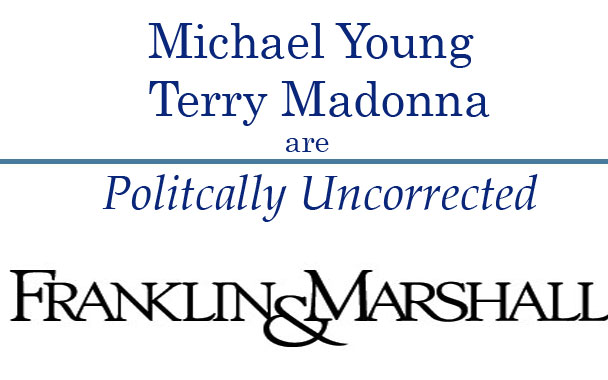Impeachment: Five Myths that Matter

Media coverage of possible presidential impeachment dominates the news today as few issues in recent memory. Yet, the constitutional framework which controls impeachment, (scattered throughout Articles I, II, and III), is little understood by even normally informed Americans.
An ancient practice derived from English common law, impeachment was incorporated into our 1787 constitution with minimum specificity and maximum ambiguity about what constitutes an impeachable offense or how the impeachment process was to play out.
Consequently, widely held false beliefs or myths abound today about the whys and wherefores of the impeachment process.
Here are five of the most problematic of them.
- The Myth: Impeachment is a legal process similar to an indictment in which the president is charged with some criminal act. To be impeached is to be charged with a crime.
The Truth: Impeachment is a political process – a political process cloaked in the legal framework provided by the U.S. Constitution. Under our system the president is treated differently legally than any other citizen. Long standing Department of Justice policy precludes a president from being indicted for any crime while in office. But the constitutional provision for impeachment provides that the U.S. House of Representatives can impeach for “high crimes and misdemeanors,” a phrase long lacking legal exactitude. In practice, an impeachable offense has become whatever a majority of the House says it is. Andrew Johnson’s 1868- impeachment was driven by policy conflicts underlying Reconstruction; Richard Nixon’s imminent impeachment was driven by impeachment articles charging abuse of power, obstruction of justice and contempt of Congress; while Bill Clinton’s impeachment carried the charges of perjury and obstruction of justice.
- The Myth: Successful impeachment removes a president from office to be succeeded by the Vice President.
The Truth: A successful impeachment (majority vote in the House to impeach) simply sets up some sort of trial in the U.S. Senate requiring a two thirds vote to convict. We don’t know exactly what happens if the Senate convicts because it has never happened for a president. No president has ever been removed. Johnson fell short of conviction by a single vote, Nixon resigned before a formal impeachment vote and Clinton was acquitted easily. Underscoring the uncertainty, if Trump is impeached and convicted, nothing in the constitution prohibits him from subsequently running for a second term – although some scholars think the Senate upon conviction could also bar him from serving in elective office again.
- The Myth: Impeachment will energize the president’s base against the party pressing for impeachment, causing them to suffer significant losses in the next election. This myth’s evil twin myth is that impeachment causes an incumbent president‘s popularity to decline.
The Truth: We simply have no basis to know or project the electoral consequences of an impeachment process. It has swung both directions across the three presidential impeachments in national history. Republicans instigated and orchestrated the 1868 Andrew Johnson impeachment –and went on to increase their majorities in Congress as well as win the White House. Similarly, Democrats led the charge against Nixon in 1974 leading to historic gains for their party in the midterms. But the Clinton 1998 impeachment process produced notably mixed electoral results – with Democrats scoring rare pickups in the 1998 midterms – but losing the presidency two years later. Pundits will spin endless scenarios purporting to predict impeachments impact on 2020. The truth is nobody knows for sure.
- The Myth: Impeachment is the “nuclear” option that is rarely used, since it tends to bring on a constitutional crisis.
The Truth: Far from rarely used, the impeachment process has been invoked 19 times, including the impeachment (or near impeachment) of three presidents and some 15 life-time tenured federal judges, including one Supreme Court justice. In addition, serious efforts have been launched through American history to impeach one public official or another. Impeachment or attempts to impeach are not novelties in American politics. Nor does impeachment necessarily bring on a crisis. Indeed, it embodies the separation of powers built into our system, signifying that checks and balances do actually work to limit power and its abuse. Far from a marker for governmental dysfunction, impeachment demonstrates the system working as designed.
- Myths: The factual basis for impeachment are clear and unambiguous. A president knows or should know when he has committed an impeachable act and the legislators who vote impeachment rely upon bright red lines that spell out what is or isn’t impeachable.
The Truth: Nothing seems more misunderstood about impeachment than the basis for it. In creating Article II, Section 4 of the constitution (“…The President, Vice President and all civil Officers of the United States, shall be removed from Office on Impeachment for, and Conviction of … high Crimes and Misdemeanors…), the Founding Fathers left it to Congress to determine impeachable behavior. In practice, Congress’ authority has been limited by its ability to convince the American people that a president should be impeached. The lack of public support for the impeachment of Bill Clinton was particularly damaging to Republicans in the 1998 midterm election. Similarly, in 2019, the strength of public support for Trump’s impeachment will determine the path the impeachment process will take. This is one reason why recent polls showing growing support for Trump’s impeachment loom so menacing to Trump supporters.
Ultimately, the American people decide what is or isn’t impeachable with Article II of the constitution acting as not much more than a legal prop in their decision-making. It is this key role played by the electorate that makes debunking of these five prevalent myths urgent. An informed citizenry makes the best decisions – and that is no myth







